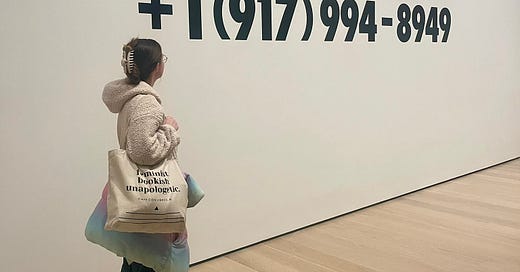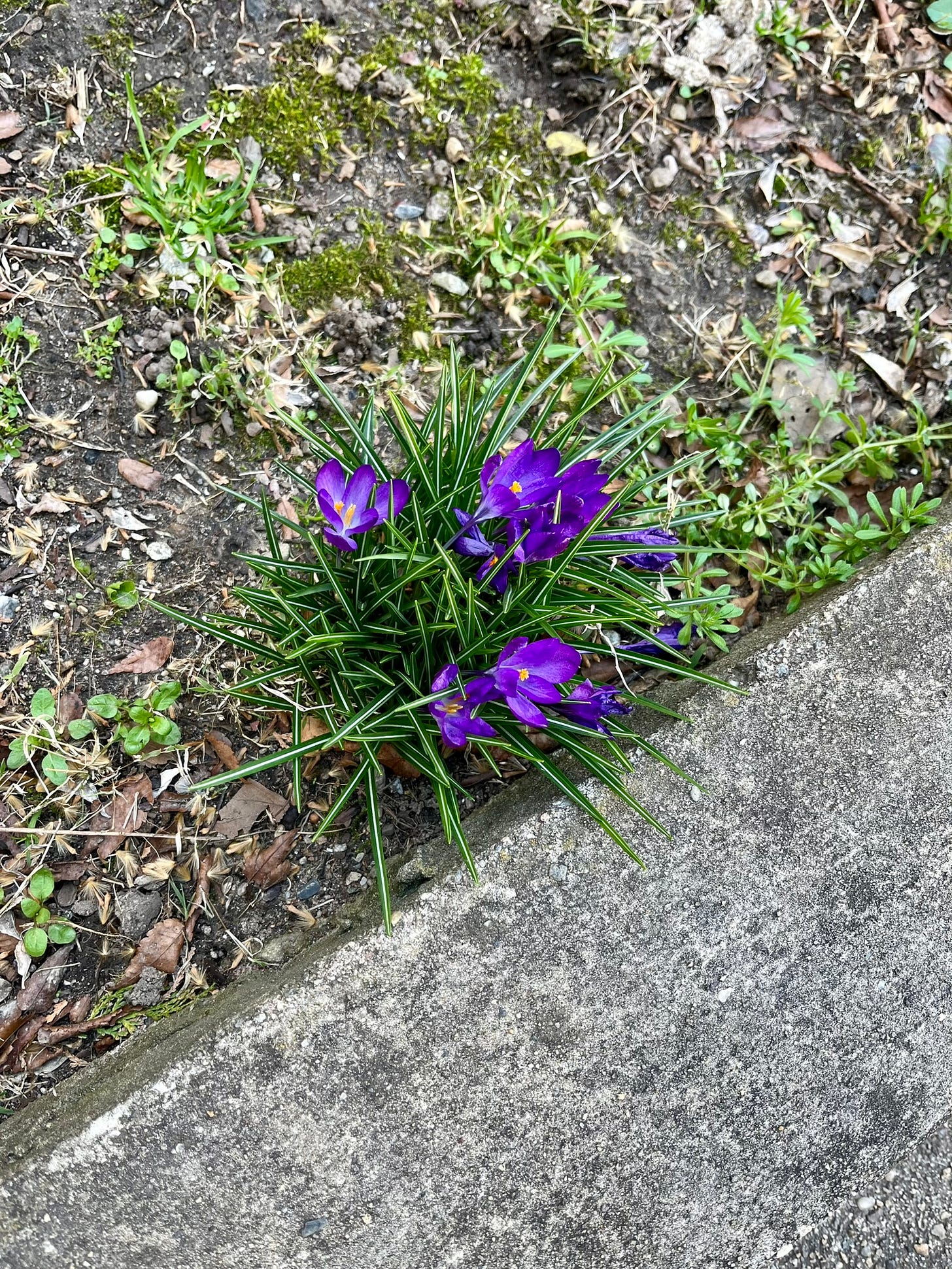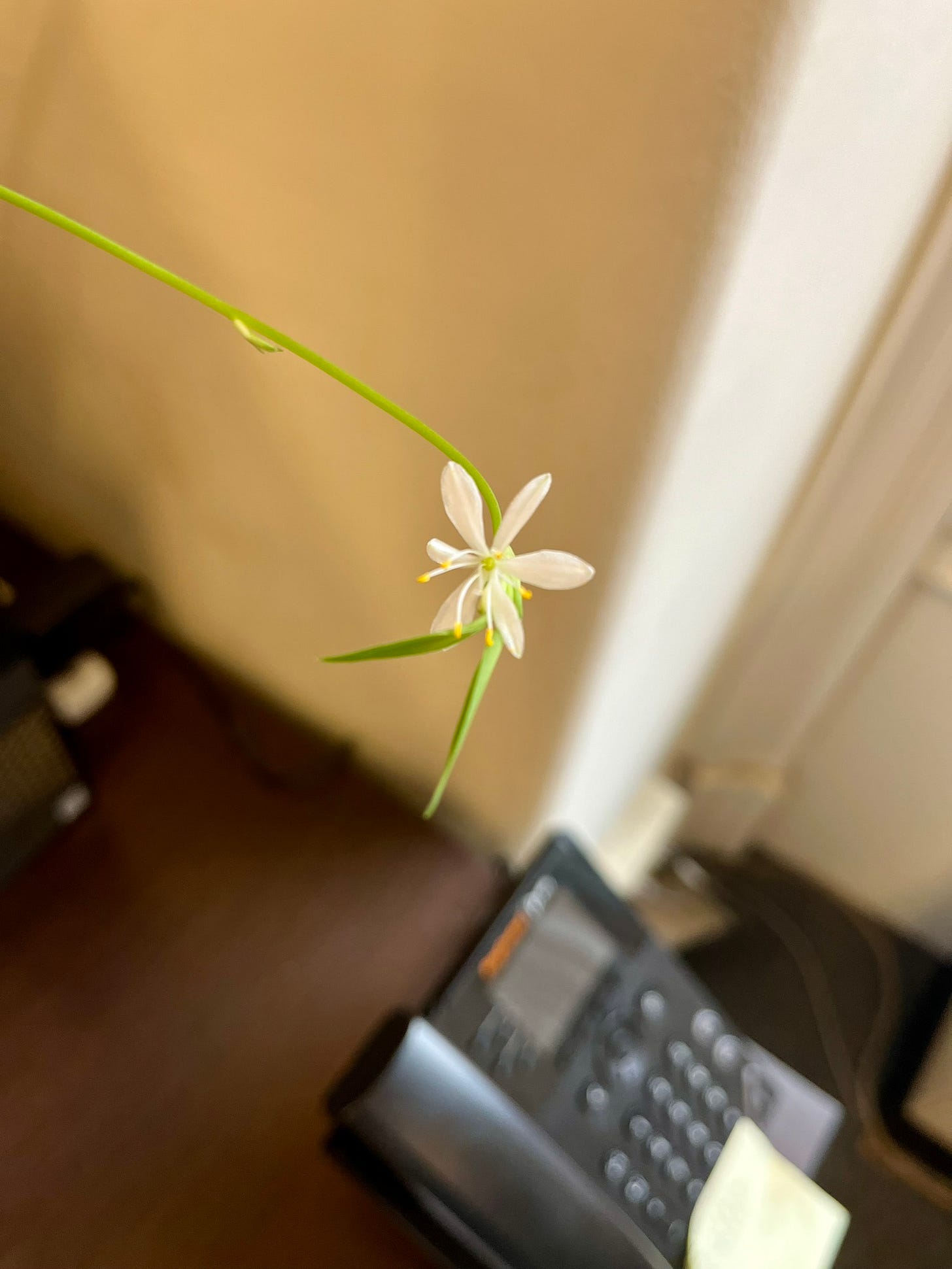“It often feels magical to me, the way our work is constantly in conversation—with the work of others, and with the work we’ve done before, with the world we live in. Everything touches.”
—Maggie Smith, “On Cross-Pollination”
Dear Reader,
Not a lot of writing got done last week—unless you count frantic emails to my building’s management. One bed bug sighting and several loads of laundry later, I’m finally back at the desk. May all our upholstery remain parasite free!
Lately I’ve been thinking about how a lot of the inspiration for my writing comes from realms outside of writing. How art begets art across genre and medium. In a recent Substack post, Maggie Smith compared this phenomenon to cross-pollination: a bumble bee of creativity carrying seeds of inspiration from one artist to another.
During the Renaissance, people kept commonplace books: pages of notes containing everything from Bible verses and snippets of poetry to recipes and doodles of plants. I had to keep a couple of commonplace books in college for various assignments. As much as I resented the extra work at the time, I’ve found a new appreciation for them post-graduation. They’re like Pinterest boards without all the weird ads and unattainable goals.
Taking stock of the things that fuel my urge to write has become a kind of gratitude practice for me. This time four years ago, I had to leave New York as COVID struck and my campus shut down. I feel so lucky to be back, surrounded by all the inspiration the city has to offer. I’d like to share some of my commonplace keepsakes with you today—all from this crazy place I am making my home.
Art
Writing and visual art make great bedfellows. Think ekphrases, picture books, and hybrid works like Mark Z. Danielewski’s House of Leaves.1 Yet poetry and storytelling were oral mediums long before they were visual ones, a journey that has taken humanity all the way from epic poems to audio books. John Giorno’s Dial-A-Poem, currently on display at the MoMA, emphasizes the beauty of this writing-audio relationship. You walk into a room of individual tables, each outfitted with a retro landline.2 When you pick up the phone, you hear a recording of a poem in the poet’s own voice. I listened to Allen Ginsberg read “I Am a Victim of Telephone,” as well as another poet whose name and poem I forgot because I was too entranced by the jazz playing softly in the background.
The voice of a poet is a mystical power. In my writing workshop, the workshopee always reads their poem before we discuss it; often this changes my perception of the poem entirely. Before Dial-A-Poem, I didn’t know that Ginsberg read so fast you can barely understand him yet doesn’t stumble over a single word, or that Frank O’Hara pronounced “yogurt” like he spelled it. (“Yoghurt.”) The recordings have a grainy, echoing quality that marks them as relics of the past. It made my heart ache to hear them. Something about the immortality of the writer, something about the voices of the dead.
That number works outside the MoMA, too. If you get a chance, give Giorno and his friends a call.
Music
Being a writer is nice and all, but I secretly wish I was the lead singer in a band. I think music is the single greatest artform on Planet Earth, the closest thing to a universal language that we have. Phrases that might not say much when sitting silent on the page can induce goosebumps when sung aloud. A huge portion of my poetry is written in conversation with various songs and musical artists. I don’t know if there’s a term for an audio version of an ekphrasis, but I’m churning them out either way.
A couple Saturdays ago, two of my friends and I ventured down to Cafe Wha? to see a performance by folk duo Viv & Riley.3 I hadn’t heard of them before, and hearing this song live filled me with creative jealousy. I wished more than anything that I had been the one to write it. Which, to be clear, is one of my favorite feelings in the world.
Give them a listen!
And when they run out of names for hurricanes will they start over? And will the Arctic have a baseball park and a field of clover? —Viv & Riley, "Is It All Over"
Nature
“What are men to rocks and mountains?” —Jane Austen, Pride and Prejudice
And what are artists to nature! March has been in full bloom in New York (though the threat of a cold, killing wind is always on the horizon). I finally found out what a crocus looks like. I reference them all the time in my writing because I like the way the word sounds, but I’ve never actually paid attention to them in real life. An error on my part. They’re popping up all over my neighborhood and I’m happy to learn that their leaves look just as spikey as the sonics of their name suggest. Could be the subject of a poem in the near future . . .4
From outdoors to indoors: my desk plant at work bloomed unexpectedly. It’s some leafy, fern-like thing that I didn’t know would flower. The tiny white blossom is often closed in the morning and opens as the sun rises—the opposite of what I tend to do at work. I have a lot of tender feelings for flowers that appear this early in spring. They never remember how bitter this month can be. Lucky for this fellow, he lives in a library and will survive the worst of the chill. (Assuming a certain library assistant remembers to water him.)
Crafts
For me, writing is not a hobby. It’s also not yet a career, which I’ve decided makes it a vocation. That is to say, it’s not exactly relaxing; it’s something at which I have to work incredibly hard. Recently I realized I would benefit from a new creative outlet, something I could make without caring about whether or not it was good. Enter: quilting!
I hate being wasteful and that includes throwing out clothes I no longer wear, so I’m turning some of them into an upcycled quilt! This is of course with no sewing machine, no pattern, and no prior experience. It’s slow going, but I’m having even more fun than I thought. Here are a couple of squares I’ve finished, cobbled together from tote bags and old band T-shirts (re: my love of music).
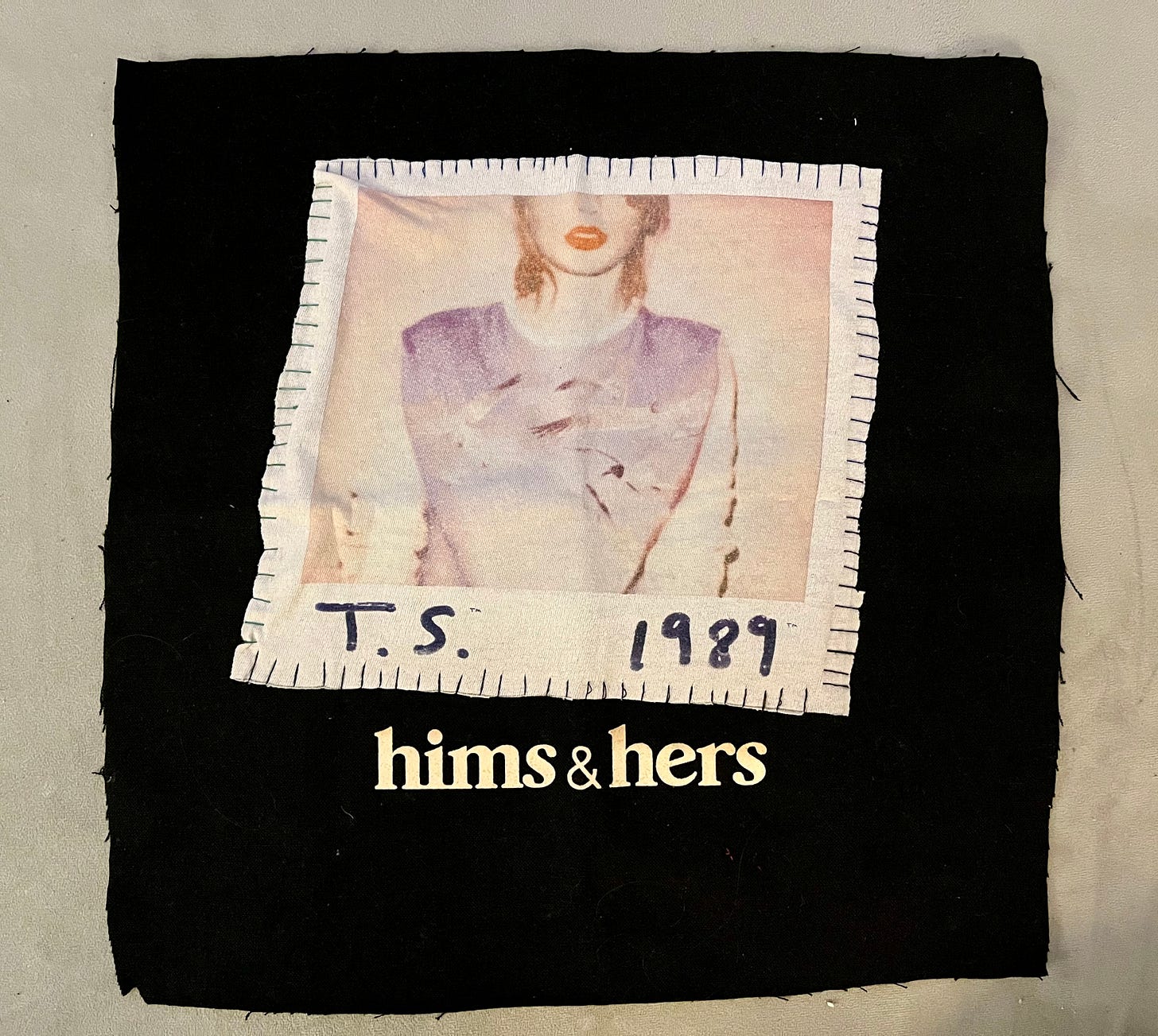
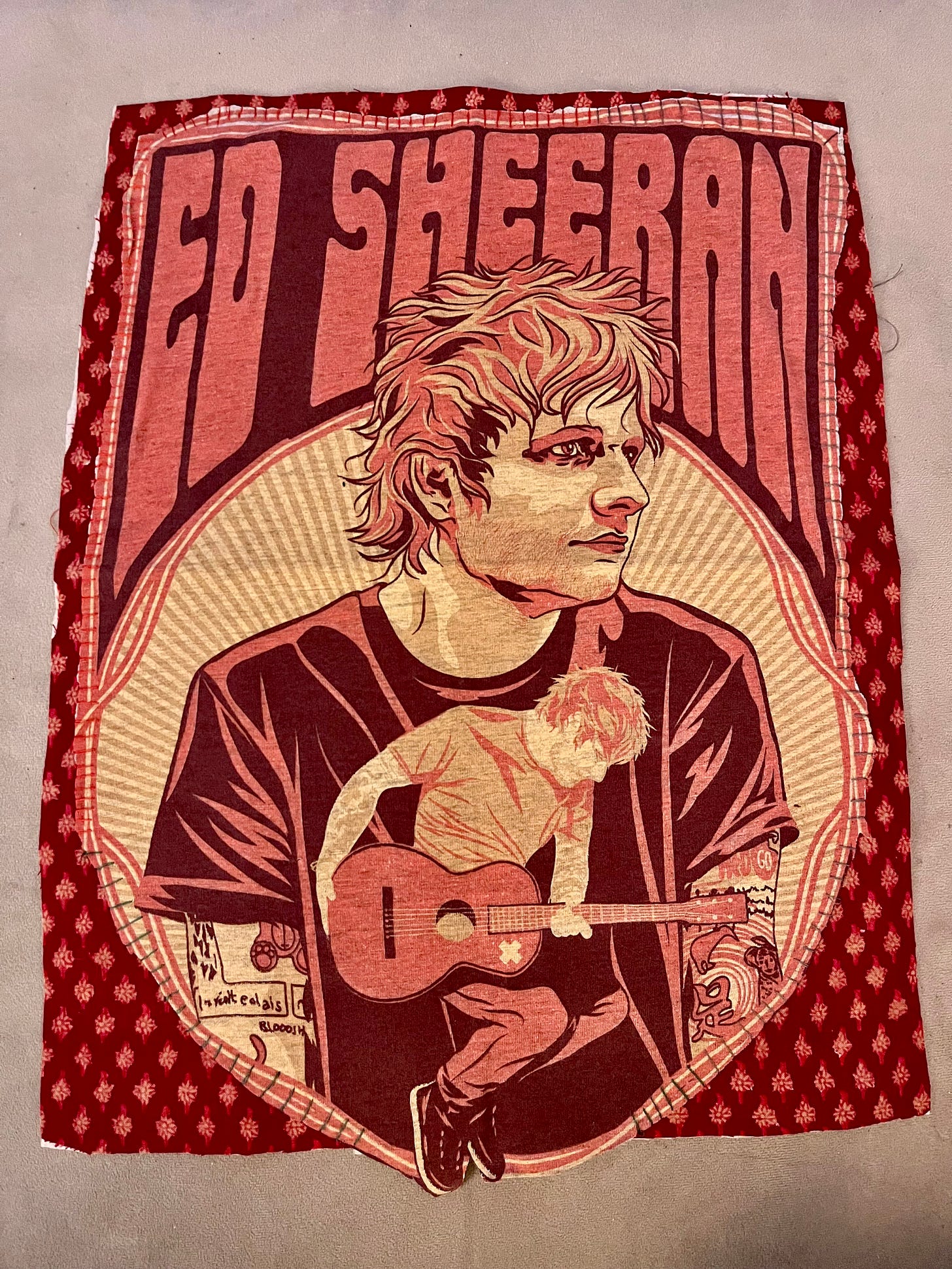
That wraps up my inventory of the city sights that are fueling my writing. Thanks for reading.
Yours,
Jane
Still on my TBR list.
You don’t have to actually use the rotary dial. Whoever put the exhibit together plainly doubted the viewer’s ability to operate such an ancient piece of technology.
This was a bit of a pilgrimage for us—we all grew up with Bob Dylan fans for dads.
In further developments, I found out from yesterday’s NYT mini crossword that, because “crocus” is a Latin word, its plural form is technically not “crocuses” but “croci.” I just can’t stop learning about these guys.


